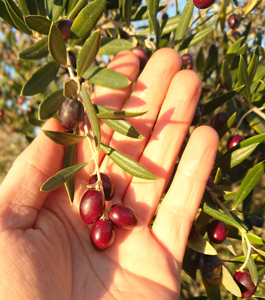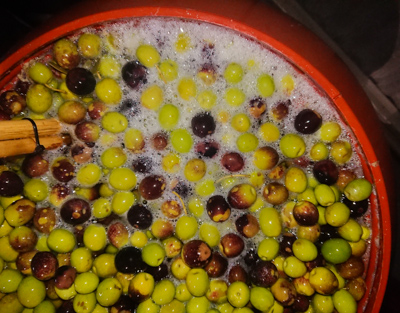- 0425 754 407
- [email protected]
Welcome to our new website, if you run into any problems while ordering. Please reach out.
The art of making delicious olives.
- Home
- In Conversation
- Olives
- The art of making delicious olives.
The art of making delicious olives.

Have you ever tried an olive straight off the tree only to spit it out in horror? What you taste is the compounds that give extra virgin olive oil its natural bitterness and a number of its health benefits; however they also make unprocessed olives inedible.
There are as many variations for making your olives edible/delicious as there are villages across the Mediterranean, which simply means there is no right way or wrong way, only the method that creates the style you love.
Whenever you preserve food, regardless of what it is, you have two options:
-
-
-
-
-
-
-
- kill all pathogens and ensure that nothing can enter the food until it’s ready to be consumed, e.g. pasteurisation and canning; or
- create an environment which is inhospitable to bugs, for example jams are high sugar, pickles are low ph, soy sauce is high salt.
-
-
-
-
-
-
I prefer to use option 2, firstly if gives your food much better flavour and if the food has undergone any fermentation during the process of preserving, it’s good for your gut as well.
To make delicious, nutrition olives, there are two stage,
-
-
-
-
-
-
-
- de-bittering, and
- preserving
-
-
-
-
-
-
De-bittering can be achieved by washing your olives daily, typically every day for 2 – 4 weeks. This will remove the bitterness, but it does nothing for preserving your olives and I find you wash a lot of flavour and oleuropein compounds out of the olives.
With fermentation preserving, you merge the de-bittering and preserving into one step. The principle is simple, place your olives in salty water, keep them covered and wait!
You can cut them or crack them, this allows the brine to penetrate the skin more quickly, which speeds up the de-bittering process, however it is just as effective to do nothing more than top the brine up regularly and wait patiently.
Like sourdough bread, if you keep it warm, the fermentation will happen faster, but the flavour won’t be as developed, cool it down, goes slow, more flavour. With olives it’s the same.

Key instructions:
- clean container, ideally with a narrow opening
- rinse olives, if necessary, ie if very dusty and place in container;
- fill with cold water, and then pour the water out into a measuring jug, this allows you to determine how much salt you need to add;
- create a brine mix of between 8-10% salt, eg 80g salt to 1L of water, use some warm water to ensure the salt is fully dissolved;
- pour brine over olives until they are covered, use something to keep your olives under the brine, river rock, branches from your preferred herb, plate etc;
- place somewhere dark and temperature appropriate, 14-20C;
- check and top up brine weekly for first 6 weeks, then check monthly; finally
- depending on what temperature you’ve storing them at, taste them after 6 months, if there is still too much bitterness, wait some more.
- If you get scum or a scoby on top, you can either leave it, with the intention of it being your sacrificial layer that you will discard later, or you can remove and make sure to top up your olives with brine so there is minimal air gap.

